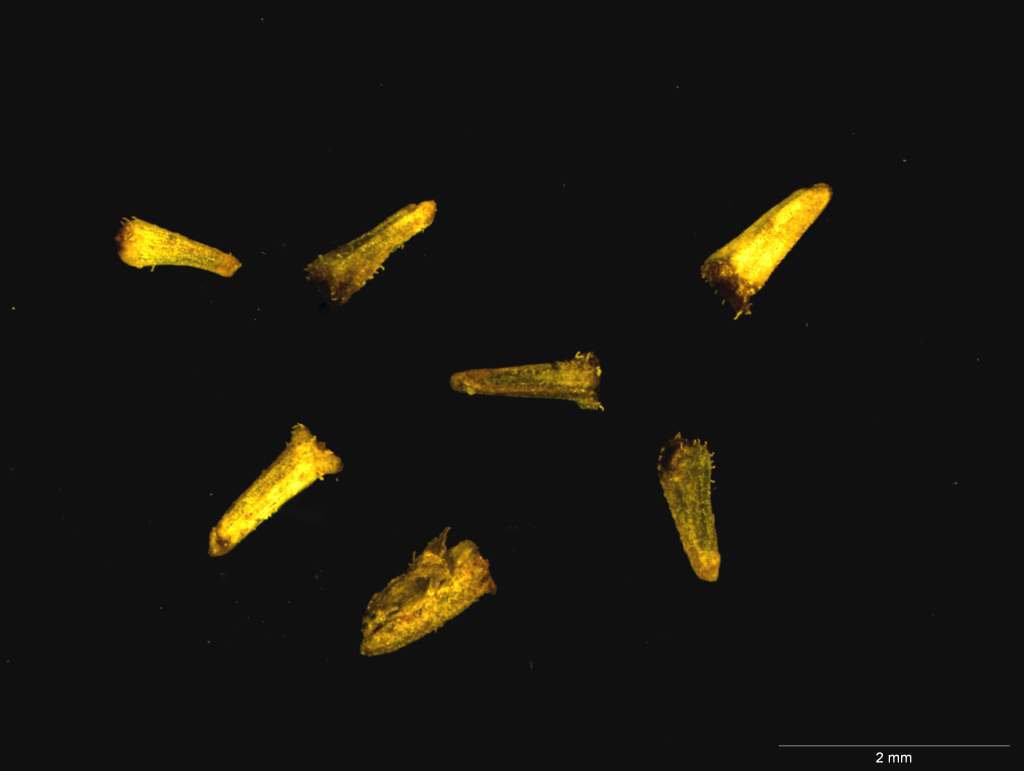Brachyscome exilis
Sond. Finger-leaved DaisyAscending to erect annual, 4–22 cm high, glabrous or with glandular hairs. Leaves basal and cauline, oblong to narrowly obovate in outline, 0.5–2.5 cm long, 2–10 mm wide, mostly pinnatisect (some entire and more or less linear), 3–7-lobed, glabrous or with scattered glandular hairs, slightly dilated basally. Peduncles glabrous or with glandular hairs; bracts c. 10–15, c. 1-seriate, c. equal or somewhat unequal, ovate or elliptic, 1.9–2.5 mm long, 0.5–0.9 mm wide, mainly green but with scarious, often purplish, glandular-hairy margins, glabrous or with scattered glandular hairs; ligules c. 3–4 mm long, white. Cypselas c. narrowly obovoid or clavate, straight, 1.5–1.9 mm long, 0.4–0.6 mm wide, brown or grey-brown; lateral faces somewhat concave; pappus absent Flowers Sep.–Dec.
LoM, MuM, VVP, VRiv, GipP. Also WA, SA, NSW. Occurring in the north-west of the state in a range of habitats, e.g. with saltbush on saline gypseous soils, in mallee eucalypt communities and in Belah woodlands.
Short, P.S. (1999). Brachyscome. In: Walsh, N.G.; Entwisle, T.J., Flora of Victoria Vol. 4, Cornaceae to Asteraceae, pp. 835–859. Inkata Press, Melbourne.
 Spinning
Spinning

